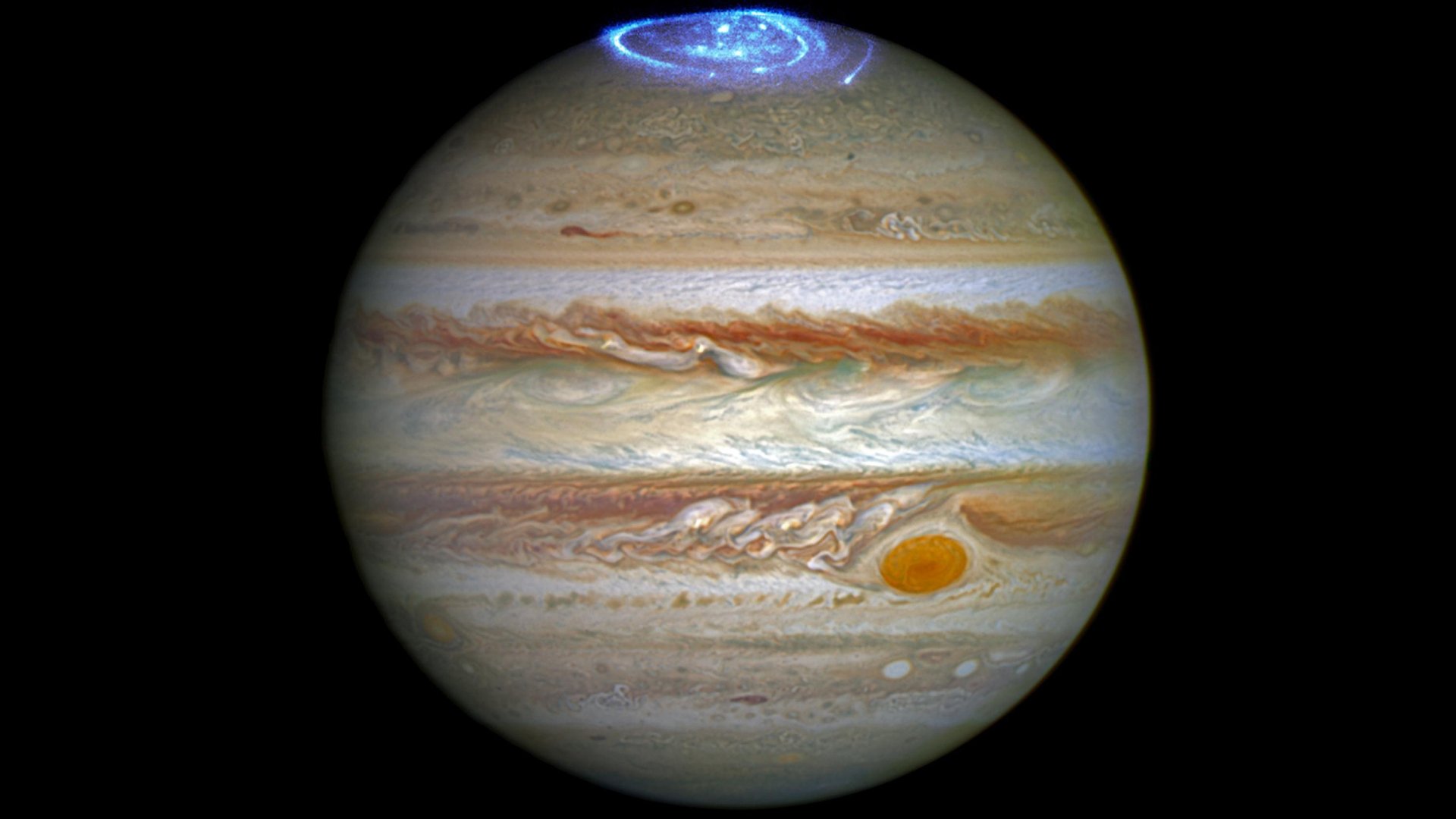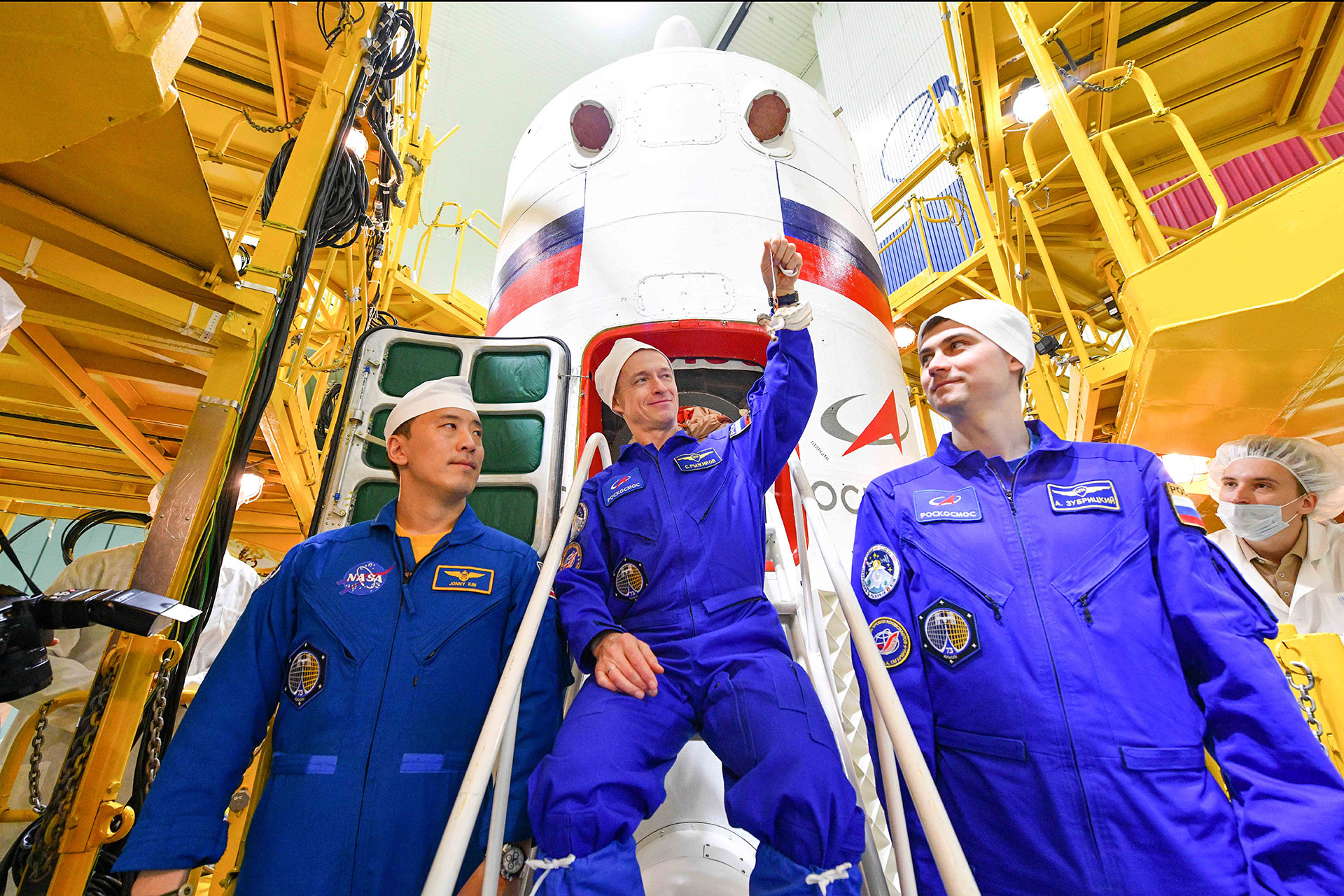Without Jupiter, Earth may have spiraled into the sun long ago
"Jupiter didn't just become the biggest planet — it set the architecture for the whole inner solar system."

Jupiter was shaping Earth's fate before our planet even existed, carving gaps in the early solar system that kept its building blocks from plunging into the sun, a new study finds.
Led by scientists at Rice University in Houston, the study suggests Jupiter's early growth cut off the flow of gas and dust toward the inner solar system, preventing the material that would one day form Earth, Venus and Mars from spiraling into the sun. In doing so, scientists say the planet's gravity not only stabilized the inner planets' orbits but also shaped the structure of the solar system, carving out rings and gaps that influenced how, and when, rocky bodies formed.
"Jupiter didn't just become the biggest planet — it set the architecture for the whole inner solar system," study co-lead Andre Izidoro, an assistant professor of Earth, environmental and planetary sciences at Rice University, said in a statement. "Without it, we might not have Earth as we know it."
Using computer simulations, Izidoro and his colleagues modeled how Jupiter's rapid growth in its first few million years affected the swirling disk of gas and dust that surrounded the newborn sun. The results show that Jupiter's massive gravity created ripples in the disk, disturbing the gas and forming ring-like bands of material that acted like "cosmic traffic jams," the statement says.
Scientists say those dense rings trapped small dust grains that would otherwise have spiraled into the sun, allowing them to clump together to form the rocky building blocks of planets.
According to the new study, as Jupiter grew and opened a wide gap in the disk, it effectively divided the solar system into inner and outer zones, preventing material from mixing freely between them. This barrier preserved the distinct footprints of elements called "isotopic" signatures found in meteorites — one type from the inner solar system, another from the outer — while also creating new regions where planetesimals could form much later.
"Our model ties together two things that didn't seem to fit before — the isotopic fingerprints in meteorites, which come in two flavors, and the dynamics of planet formation," Baibhav Srivastava, a graduate student at Rice University who co-led the study along with Izidoro, said in the same statement.
Breaking space news, the latest updates on rocket launches, skywatching events and more!
The study also explains why some primitive meteorites formed millions of years later than the first solid bodies in the solar system.
These later-born meteorites, known as chondrites, are considered among the most pristine materials in existence because they contain tiny molten droplets, called chondrules, that preserve the chemical record of the solar system's earliest days.
"The mystery has always been: Why did some of these meteorites form so late, 2 to 3 million years after the first solids?" Izidoro said in the statement. "Our results show that Jupiter itself created the conditions for their delayed birth."
By shaping the disk and halting the inward flow of material, Jupiter likely caused a second generation of planetesimals to form later, some of which became the chondritic meteorites that still fall to Earth today, the study notes.
The same kinds of rings and gaps predicted in the team's models are now observed in young star systems with the Atacama Large Millimeter/submillimeter Array (ALMA) in Chile, supporting the idea that giant planets sculpt their surroundings as they form.
"Our own solar system was no different," Izidoro said in the statement. "Jupiter's early growth left a signature we can still read today, locked inside meteorites that fall to Earth."
The findings are detailed in a paper published Oct. 22 in the journal Science Advances.

Sharmila Kuthunur is an independent space journalist based in Bengaluru, India. Her work has also appeared in Scientific American, Science, Astronomy and Live Science, among other publications. She holds a master's degree in journalism from Northeastern University in Boston.
You must confirm your public display name before commenting
Please logout and then login again, you will then be prompted to enter your display name.
